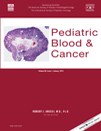Semen analysis in adolescent cancer patients prior to bone marrow transplantation: When is it too late for fertility preservation?†
Conflict of interest: Nothing to declare.
Abstract
Background
Sperm banking is an effective method of fertility preservation in adolescent boys with cancer but is strikingly underutilized, partly due to inconsistencies in fertility counseling and unclear guidelines regarding who should bank sperm. Patients undergoing bone marrow transplantation (BMT) are of particular interest given the high risk of infertility in this population.
Procedure
We reviewed the charts of male cancer patients who underwent BMT at age ≥13 years at the Dana-Farber Cancer Institute (DFCI) from 2003 to 2010 to determine the number of fertility preservation attempts prior to initial treatment and/or BMT, and the outcomes of those sperm banking attempts.
Results
Sixty-eight male cancer patients who had a BMT at age ≥13 years at the DFCI from 2003 to 2010 were included in the analysis. Six patients had attempted sperm banking prior to initial therapy. Thirty-three patients attempted to bank prior to BMT; of those, 39% were azoospermic and 15% were oligospermic. Nineteen patients did not attempt to bank, and in 13 patients the decision to bank was unclear.
Conclusions
A more consistent approach to fertility counseling is essential for adolescent cancer patients. Though first line therapy may be low-risk in terms of long-term impact on fertility, our results demonstrate that transient gonadal dysfunction is common and ongoing chemotherapy may affect spermatogenesis. Should a patient undergo BMT during this period, sperm banking is unlikely to be successful; initial fertility risk assessment should account for this possibility. Pediatr Blood Cancer 2013; 60: 129–132. © 2012 Wiley Periodicals, Inc.




